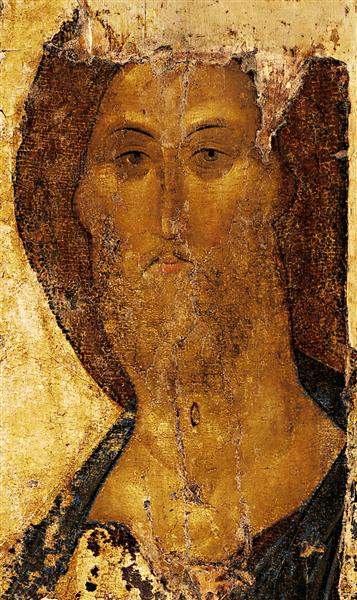
Byzantine Art
Art movement
Byzantine art is the name for the artistic products of the Eastern Roman (Byzantine) Empire, as well as the nations and states that inherited culturally from the empire. Though the empire itself emerged from Rome's decline and lasted until the Fall of Constantinople in 1453, many Eastern Orthodox states in Eastern Europe, as well as to some degree the Muslim states of the eastern Mediterranean, preserved many aspects of the empire's culture and art for centuries afterward.
A number of states contemporary with the Byzantine Empire were culturally influenced by it, without actually being part of it (the "Byzantine commonwealth"). These included the Rus, as well as some non-Orthodox states like the Republic of Venice, which separated from the Byzantine empire in the 10th century, and the Kingdom of Sicily, which had close ties to the Byzantine Empire and had also been a Byzantine possession until the 10th century with a large Greek speaking population persisting into the 12th century. Other states having a Byzantine artistic tradition had oscillated throughout the Middle Ages between being part of the Byzantine empire and having periods of independence, such as Serbia and Bulgaria. After the fall of the Byzantine capital of Constantinople in 1453, art produced by Eastern Orthodox Christians living in the Ottoman Empire was often called "post-Byzantine." Certain artistic traditions that originated in the Byzantine Empire, particularly in regard to icon painting and church architecture, are maintained in Greece, Cyprus, Serbia, Bulgaria, Romania, Russia and other Eastern Orthodox countries to the present day.
Just as the Byzantine Empire represented the political continuation of the Roman Empire, (the term "Byzantine" being a creation of later historians, the Byzantines considering themselves to be Romans), Byzantine art developed out of the art of the Roman Empire, which was itself profoundly influenced by ancient Greek art. Byzantine art never lost sight of this classical heritage. The Byzantine capital, Constantinople, was adorned with a large number of classical sculptures, although they eventually became an object of some puzzlement for its inhabitants. And indeed, the art produced during the Byzantine Empire, although marked by periodic revivals of a classical aesthetic, was above all marked by the development of a new aesthetic.
The most salient feature of this new aesthetic was its "abstract," or anti-naturalistic character. If classical art was marked by the attempt to create representations that mimicked reality as closely as possible, Byzantine art seems to have abandoned this attempt in favor of a more symbolic approach.
The nature and causes of this transformation, which largely took place during late antiquity, have been a subject of scholarly debate for centuries. Giorgio Vasari attributed it to a decline in artistic skills and standards, which had in turn been revived by his contemporaries in the Italian Renaissance. Although this point of view has been occasionally revived, most notably by Bernard Berenson, modern scholars tend to take a more positive view of the Byzantine aesthetic. Alois Riegl and Josef Strzygowski, writing in the early 20th century, were above all responsible for the revaluation of late antique art. Riegl saw it as a natural development of pre-existing tendencies in Roman art, whereas Strzygowski viewed it as a product of "oriental" influences. Notable recent contributions to the debate include those of Ernst Kitzinger, who traced a "dialectic" between "abstract" and "Hellenistic" tendencies in late antiquity, and John Onians, who saw an "increase in visual response" in late antiquity, through which a viewer "could look at something which was in twentieth-century terms purely abstract and find it representational."
This is a part of the Wikipedia article used under the Creative Commons Attribution-Sharealike 3.0 Unported License (CC-BY-SA). The full text of the article is here →
Wikipedia: https://en.wikipedia.org/wiki/Byzantine_art